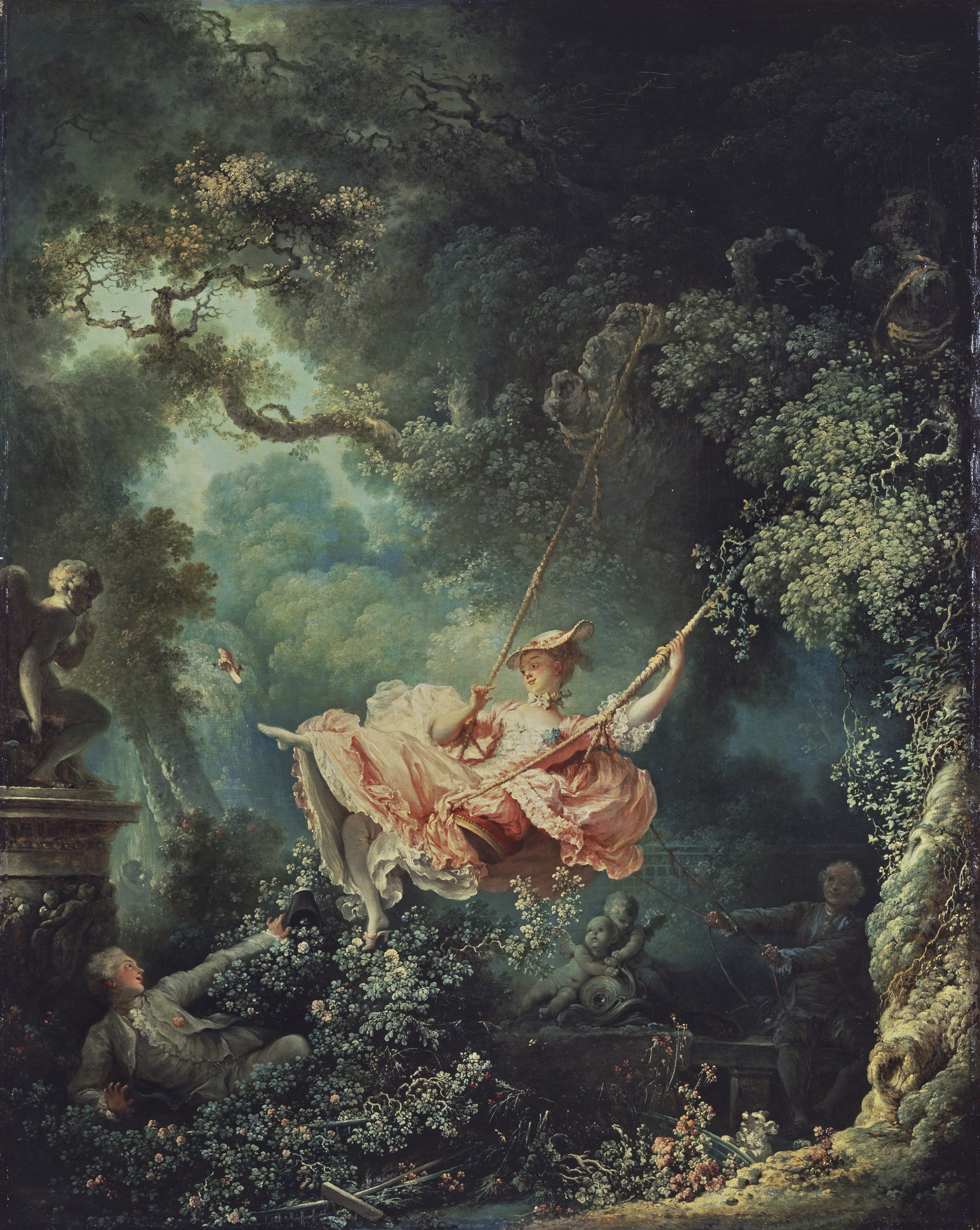The Swing by Jean-Honore Fragonard
1766
The Era:
Arguably the most iconic painting of the era, The Swing by Jean-Honore Fragonard was created during a time where Rococo was a style exclusive to the aristocrats. During this time, the shift in power from the monarch to the aristocracy gave the latter more influence over the styles that dictated popular art and architecture of the past. Because the aristocracy had both immense power and wealth, the rules that governed them were more lax than that of the monarchy. Consequently, the Rococo period paintings became a celebration of a new type of culture that was loose in sexual rules and practices.
What it Depicts:
The infamous painting's central feature is a woman on a long swing that hangs from a large tree. It appears innocent at first until you notice that she is gaily flinging off her shoe towards a suitor who lays in the bed of shrubs below her. Not only that, but her dress is flying up and she makes no attempt to smooth it down even though the male at the bottom left stares at what is beneath it. The lightness of her posture and clothing suggest a blithe attitude to anything outside of what she is currently doing. A priest stands behind her to push her forward showing that the aristocracy and their ways included those in the church as well. His position and expression imply that he is perhaps her lover.
What it Represents:
Simply put, The Swing is the embodiment of the Rococo spirit. Despite this being a "norm" for the time, the painting was still a scandal in the public's eyes. It not only captures a moment of spontaneity and frivolity, but also shows the darker side and relations of the Rococo period and its aristocrats.
Sources:
http://en.wikipedia.org/wiki/The_Swing_(painting)
http://smarthistory.khanacademy.org/rococo.html
http://www.bc.edu/bc_org/avp/cas/his/CoreArt/art/anc_frag_swing.html
http://www.artble.com/artists/jean-honore_fragonard/paintings/the_swing







